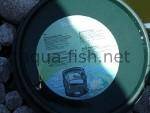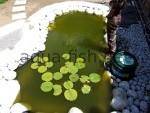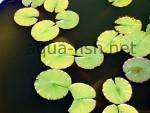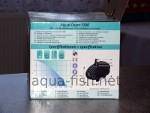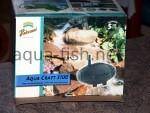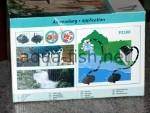Information about Fish Pond Pumps
Hold it! Before you have that hole dug for a fish pond, take a look at the features of a pond pump. Will it be just the right pump for the pond you have in mind? This is something you have to bear in mind when you are going to have a pond or a water garden. Are you going for moving water in your pond?Then here are some tips in selecting just the right pond pump for you. Before you go shopping remember that there are two types of water pumps—submersible and out of water models. Ask for a chart and other information from the supplier before settling on a choice. If you have a small fish pond in mind, get a submersible pump—aside from being economical, it will be efficient. A bigger pond will need an external water pump.
A submersible pump is placed in the pond. This can drain the water from the pond without a distracting noise that can irritate the neighborhood. The magnetic drive pump is a smart choice, although expensive it is economical to operate and will last longer. A magnetic drive pump has no shaft seal to leak power. Even when used heavily, it can eliminate overloading and motor burnouts that usually occur when regular water pumps are used beyond their capacity.
A submersible pond pump has three major parts: motor, impeller, and volute. These may come in different designs and make. When these parts are put together, they form what becomes a centrifugal pump. The centrifugal force of the pump causes the water to be spun outwards through its rotating action. Water enters the center of the impeller that does all the rotating action. When water moves to the external span of the impeller, it gains speed and is ejected by the sheer force of energy it has sucked from the rotating impeller. At the very instance, when water is forced away from the impeller by centrifugal force, the pressure eases up at the impeller and water is drawn into the spiral from the pond. Of course, the motor consists of electrical parts that can be safely dismantled from the moving mechanical part. The motor relies on electromagnetic fields to rotate the impeller.
Advertisement: Get a 10% discount on pond products (except for pond liners) at graystonecreations.com! Enter Aquafish10% in the coupon code section of the order form when you check out!
You may want to know which type of submersible pump you would need. There are two types of pond pumps. The difference is made by how the motor is activated. The synchronous type uses a permanent magnet attached to the impeller and causes it to rotate and pump water. This type of pump uses an inner and outer magnet ring—there are magnets of the same size within each ring. The synchronized action of the inner and outer rings causes the impeller to rotate in unison with the outer magnetic fields.
Fish pond and pond plants
Fish pond pump
The asynchronous also uses a permanent magnet but the impeller is attached to an iron core with aluminum or copper bars coated with an erosion-resistant material. The rotating motion induced by the electromagnetic motor causes the impeller to spin. This spinning motion runs at a different speed instead of synchronizing its motion to the inducted magnetic field.
When operating electrical equipment near a pond it is recommended to use an outdoor outlet. Place the outlet at least 6 to 7 feet away from the water. The outlet should not just be any outlet but must be prepared with a ground fault interrupter. This is for the safety of anybody who happens to be near the pond. All cables should be wrapped with a plastic tube intended for electrical wires to avoid any accidental shocks. The wires can be hidden under rocks so these won’t spoil the view.
To get the right pump, you have to have an idea of the type of filtration and how many gallons of water your pond contains. To save all the trouble of calculating the size of the pond and the volume of water, ask the supplier to help you with this. Bear in mind too that a good pump must have sufficient flow rate for the volume of water in your pond. Consider the pump’s head capacity for a turnover every two hours. You don’t want to end up with the wrong purchase.
Since pumps run non-stop for some hours to maintain a healthy bio-filter, it makes sense to compare the running costs of two models. There’s the electricity cost to consider when getting a pond pump. Take a look at their power consumption in watts and do a mental calculation. Oftentimes the more expensive pond pump will use less electricity in the long haul.
A model of a submersible pump will have 1/8 HP 110 volt motor of 2.5 amps, plopropylene pump housing, Max Suction Lifet of 22.96 ft., 1 inch outlet diameter, epoxy powder-coat finish and stainless steel rotor shaft and 2- ft. power cord. It can pump up to 1326 GPH/22 GPM and has a vortex style impeller that prevents clogging.
A regular non-submersible pump has a dimension of 5”Lx2.7” Wx4.8”H, with 15’ cord. It may have a maximum head of 8’ shut-off and a maximum flow of 250 gph and run on 25 watts. The pump has single-phase, 120 voltage. The outlet is encased in 1/2” smooth discharge fitting, that accepts 1/2” tubing. Shipped, it will weigh 5 lbs. and priced at $42 excluding shipping fees.
Prices for pond pumps vary according to make and function. Energy efficient pumps from 250 gph to 5000 gph can cost from $45.99 to $248.98. A self-priming pump working even above water level will cost $539 to $778.05. Pumps are priced differently according to function and features—it is a matter of choosing what would work well for your fish pond.
